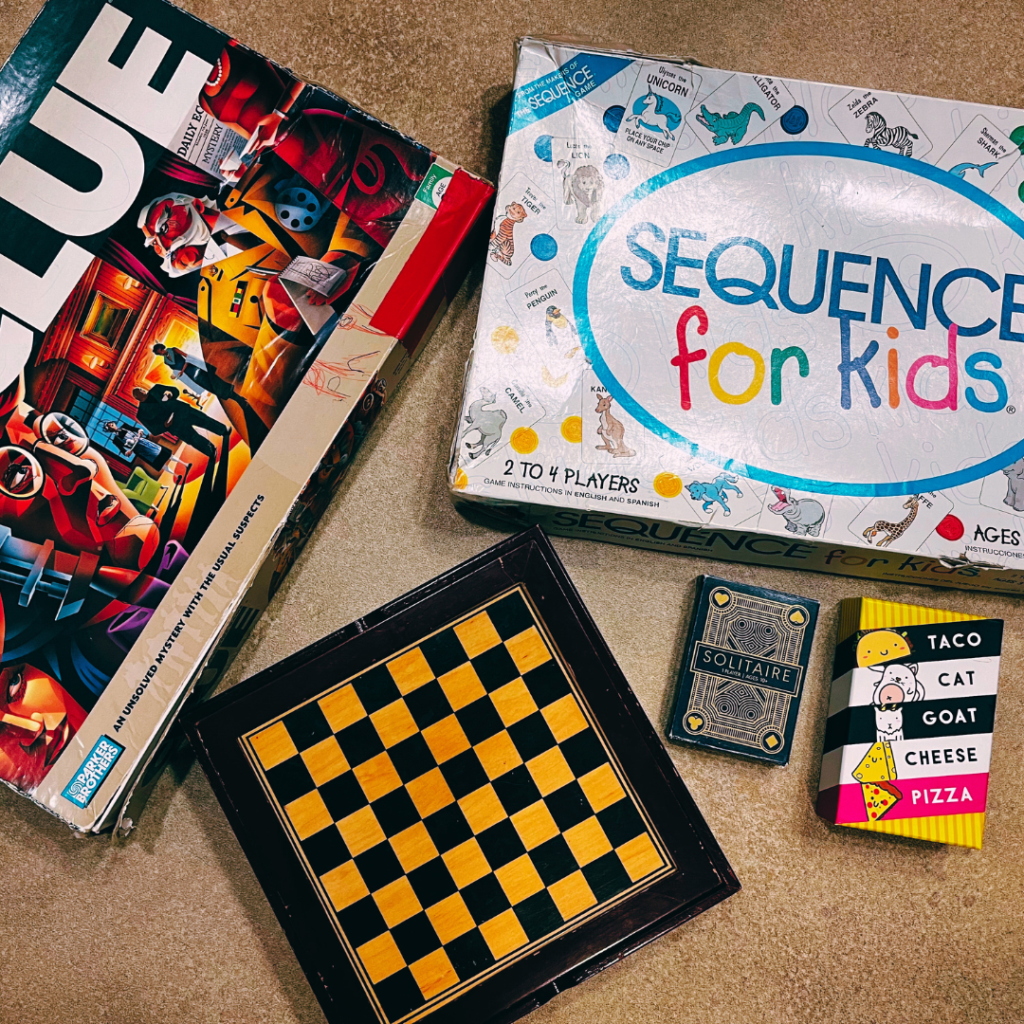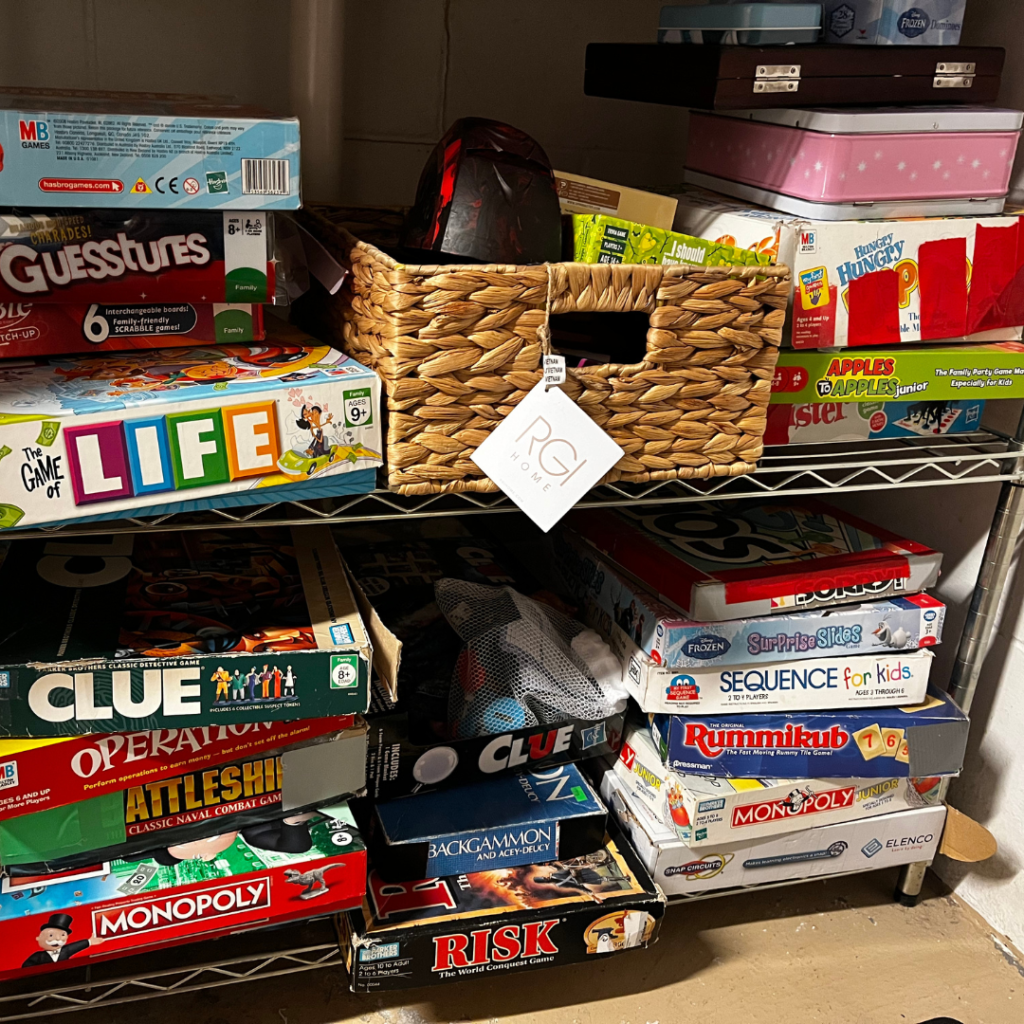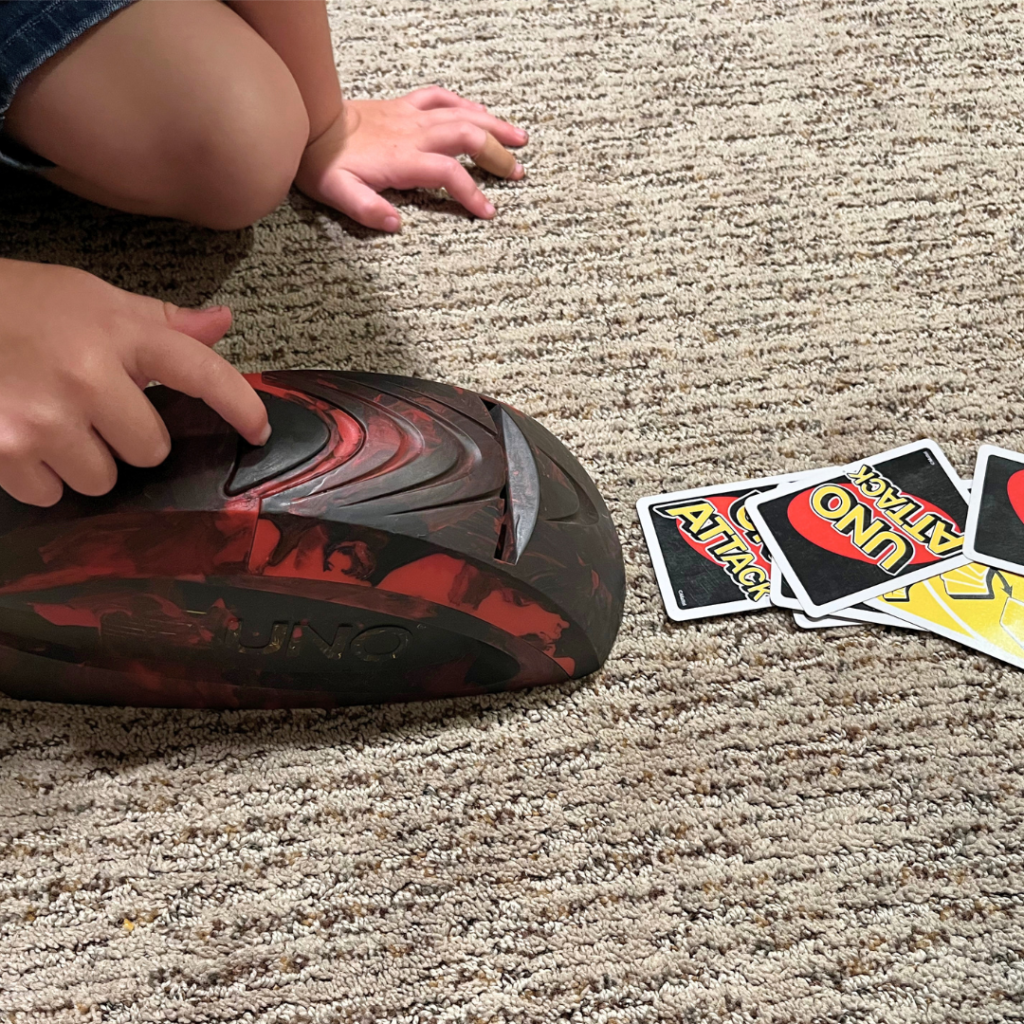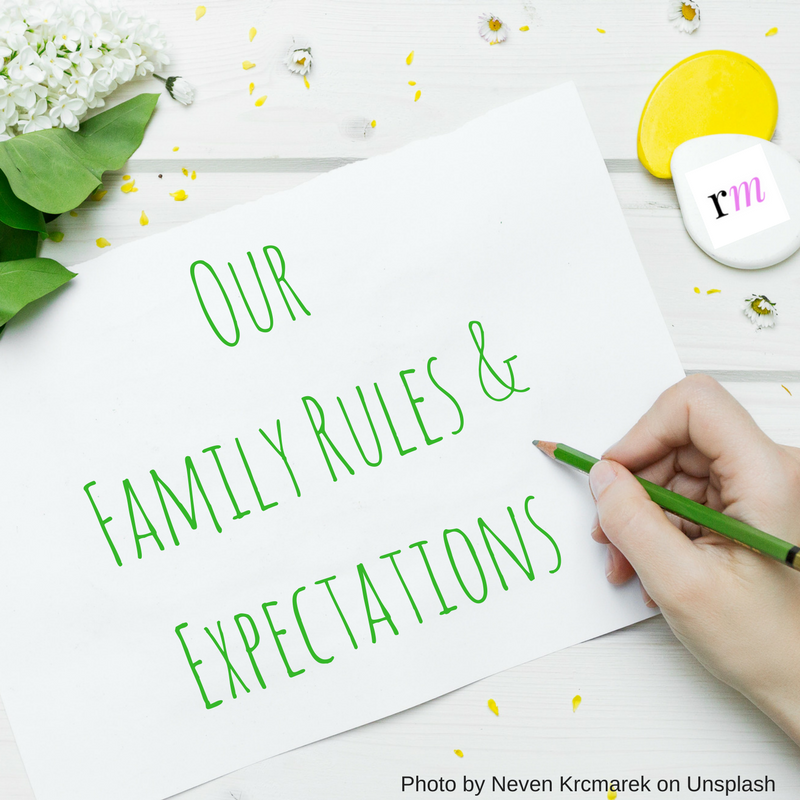
I don’t like games. Not card games, or board games, or outdoor games, or video games, or even one single sport. I don’t like watching other people play them, either.
What I enjoy even less than playing games is playing them with my children, who can never agree on whose turn it is or what the rules are. Almost every time I do break down and play a game with them, I regret it. They scream, they cry, someone moves the board and all the pieces fall over, and I swear to never play with them again.
So, perhaps a more accurate name for this post is “Family Games I Only Hate a Little Bit.” The list I’m about to share doesn’t have any fancy new games on it, because I don’t buy fancy new games. I buy games that are simple, with pieces that can be replaced by coins or Legos when they get lost. Games with very few rules that leave absolutely no room for interpretation. I also don’t buy games that take forever to play; not only do I not want to be stuck playing a game for hours, but I also don’t want to have to try to preserve a game board mid-play for days on end. (Sorry, Risk and Monopoly).
Game Buying Tips
Before I get into my list, here are a few game-buying tips I’ve learned over the years:
- Do not buy a game for a specific child as a gift, unless it’s a one-player game. When you do this, you create a forced-sharing situation that most kids cannot handle. Whoever gets the game will insist that it is only played with him, that he will always get to be the best color/character, and that he is the ultimate authority on all of the rules. You might as well just ask your kids to get into a huge screaming match; at least that doesn’t cost any money.
- Do not buy “educational” games. Kids can spot these a mile away. They’re usually either really complicated or really boring. Or both. Also, don’t assume that you can use regular games to teach specific skills. I mistakenly assumed that playing Scrabble with my kids would help them become better spellers, but that has not been the case. Those who can’t spell just keep staring at their letters and/or putting ridiculous nonsense words on the board until I take over and spell things for them. So, they feel dumb for not knowing any words, and I’m basically playing the whole game by myself. Same thing with using card games to teach counting or adding; those skills really have to come BEFORE the card game is played.
- Pay attention to the ages on the box. If you try to play more advanced games with younger kids, you multiply the aggravation that normally accompanies any game by a factor of ten. If I play a game with the whole family, including kids who are too young to understand it, I pair the younger ones up with me so they can roll the dice, draw the cards, or move the pieces without having to actually understand what’s going on.
- Go to the thrift store. I am not the only person who hates games. Thrift stores are FULL of old games (and brand new ones), and you can get them for pennies on the dollar. The only problem I’ve had with thrift store games is checking whether the pieces are all there; usually, the boxes are taped shut. Give it a little shake, weigh it in your hands, and hope for the best. This is why I like games with few pieces that can easily be replaced by something else.
- Store your games where little ones can’t get to them. Maybe this seems obvious, but it took me a while to figure this out. If you leave games in easy reach, your toddlers will dig out all of the play money and rip it into pieces, then find all the small pieces and attempt to swallow them.
- Train your kids to play the games on their own. In my opinion, the whole point of games (with the exception of video games) is to occupy my children’s free time with something other than a screen so I can do something else.

Card Games I Don’t Hate
- UNO. UNO is the best game ever. All you need is a deck of UNO cards, the rules are simple, and the games are usually pretty short. There’s a large range (2-10) for the number of players, and the minimum age is only 7 years old. I would say that once a child is a solid counter and can understand that they can EITHER match the color OR the number, she’s old enough to play. I have a 6-year-old who’s still not quite there. The only problem with UNO is that if I catch one of my kids with one card before they yell, “UNO,” they cry and refuse to keep playing. So, I usually l don’t do that.
- Solitaire. Solitaire is one of my favorites because it’s a one-player game, it’s easy to play, and it’s quick. Once your child has a firm grasp on counting and what the face cards mean, she can start playing Solitaire. That’s probably around the same time as UNO; age 7 or so. I think Solitaire helps kids to learn that you can’t always win every game in a gentler way than a multi-player game. They can lose without anyone else knowing, so it doesn’t sting quite as much. It also familiarizes them with the four suits and the face cards so they can play games like Hearts and Spades when they get a little older.
- Garbage. I love this game because it uses a regular deck of cards. It’s another game for kids who know how to count, but it seems to be easier than UNO or Solitaire. Your 5-6 year old may be able to play it without any help. I won’t get into the rules, but you can read them at the Game On Family website.
- Taco Cat Goat Cheese Pizza. I don’t actually like to play Taco Cat Goat Cheese Pizza, but my kids love it, and the rules are so simple that they can set it up and play it without me. It’s flexible too: non-readers can play it, and you can have anywhere from 3-8 players. Basically, the first person flips over a card and says, “Taco,” then the next person flips over a card and says “Cat,” then “Goat,” then “Cheese,” then “Pizza.” You go around and around like this until someone says the word that actually matches the picture. If the picture and the word match, you race to slap the stack of cards. The last person to slap the cards has to take them all, and the first person to run out of cards wins. I’m not promising that this won’t end in yelling or tears, but it usually goes pretty well at our house. The game is short enough that no one’s all that invested in the outcome.
Board Games I Don’t Hate
- Chess. I don’t know how to play chess. My dad has taught me. My husband has taught me. Even my children have taught me. I just can’t do it. But, my kids love it, and according to my husband, they really do know how to play it. It does cause a lot of fighting, but since I don’t know the rules, my kids have learned not to come to me to mediate. The next time I buy a chess set, I’m getting a full-sized magnetic board like this one. The biggest problem my kids have is that someone is always accidentally knocking over the pieces, and our magnetic travel-sized board is just too small.
- Guess Who. Guess Who is one game that I almost kind of enjoy. It’s a two-player game that doesn’t require any reading aside from the names of the characters, which really doesn’t matter until the very end of the game. It’s got two sets of 30 or so faces, one set for each player. You draw a card with one of the 30 faces on it, and that’s your character. The other player has to try to guess your character by eliminating all the others based on hair color, eye color, etc. At the same time, you’re trying to guess your opponent’s character. You might ask, “Does your player have red hair?” If the other player says “No,” you turn down all of the faces in your set that have red hair. Eventually, one of you gets down to the last person out of the 30 and guesses who the other person’s got. Anyway, it’s a quick game that basically doesn’t require reading, and there aren’t a ton of pieces to lose. I think I might have just thrown ours away because some of the cards are missing, but I bet I had it for 15 years.
- Clue. I loved Clue growing up (remember the movie?), so I think that’s why I don’t mind playing it now. Unfortunately, Clue is very hard to play with kids who can’t read, even if you get the scorecards with pictures instead of words. It’s also about murder, so I suppose some parents might object to it on those grounds. However, you’re not trying to murder anyone; you’re trying to solve a murder. That’s how I justify it to myself. For Christmas last year, as a family gift, I got a giant-sized version of Clue where the board is actually a blanket. I can’t find it new online anywhere, but you might be able to find it on eBay or Etsy.
- Sequence. Sequence violates one of my rules: there are a lot of cards and a lot of tokens involved. Also, the game board is always in danger of being bumped, which moves everyones tokens, which causes crying. However, I have a version of Sequence for non-readers, and that’s the reason Sequence is on the list. You truly can play it with kids under 6 and they can figure it out. Basically, there’s a board with rows of pictures of animals on it in random order. Then, there’s a deck of cards with pictures of animals on them. A player draws a card with an animal on it and places a token on that animal on the board. The first one with four tokens in a row wins.

Board-Free, Card-Free Games I Don’t Hate
- Pictionary. I’m not talking about the actual game. I think the actual game has a board, and pieces, and cards, and lots of rules. I’m talking about gathering your kids together, whispering the name of an item in someone’s ear (a very easy-to-draw item), and having them draw it until one of the other kids guesses what it is. All you need for this game is a few pieces of paper and a pencil. I will say that I recently splurged on a dry erase board that sits on an easel, and it has been life-changing. If you have one of those, definitely use it for this game.
- Animal, Mineral, Vegetable. This game is like 20 questions, but you don’t actually have to keep track of how many questions are being asked. One child comes up with an item to guess and announces whether it is an animal, mineral, or vegetable. Everything that’s not alive is considered a mineral. The other children ask “yes” or “no” questions about the item until someone guesses what it is. This one scores big points for not requiring any equipment (or mom) to play. I own the game Headbands, which is supposed to be similar to this, but my kids can never seem to play it all the way through. You’re wearing a card with the item you’re supposed to be guessing on your forehead, so the younger kids tend to look at other people’s cards and guess those items, which makes it easy for the older kids to win.
- Hide and Seek. Even in my smallish house, with a bunch of kids, hide and seek is fun. The kids make up all kinds of strange rules and versions of it, and they usually even let the little ones play. The only downside is the screaming and the running, but honestly, there’s always a lot of screaming and running.
That’s It.
That’s all of them. The only games of the dozens and dozens I’ve been forced to play over the course of my life that I’m still willing to play now. I hope my favorite family games give you a renewed hope for family game time and lead to hours (or minutes, at least) of family fun.
Do you have some favorite games to share? Tell us about them in the comments!


